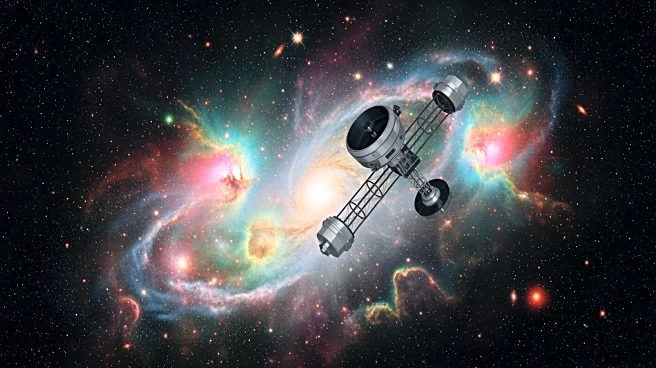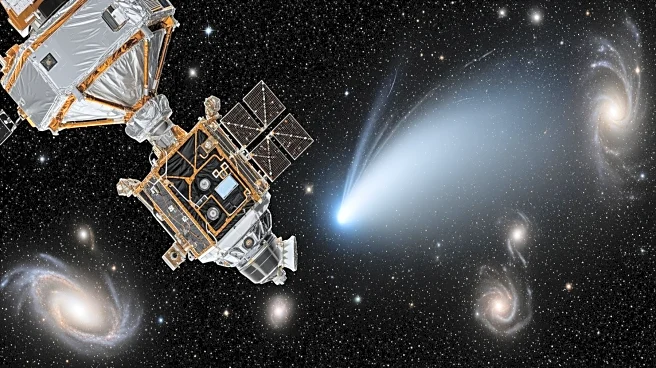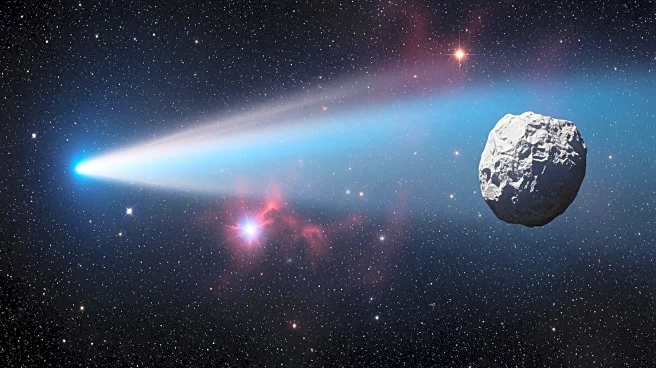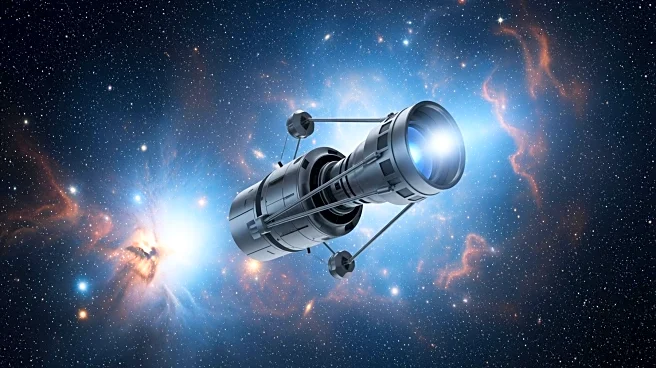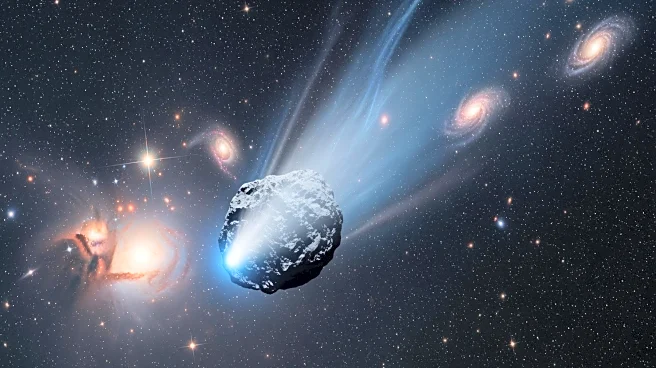What's Happening?
The James Webb Space Telescope has captured a remarkable image of Wolf-Rayet Star WR 124, described by NASA as a 'prelude to a supernova.' The star, located 15,000 light years away, is known for its intense
stellar winds and mass loss, which contribute to the formation of nebulae. The image provides a detailed view of the star's structure and the surrounding cosmic environment.
Why It's Important?
Wolf-Rayet stars are crucial to understanding the life cycle of massive stars and the processes leading to supernovae. The detailed imagery from JWST offers insights into the star's mass loss and the formation of nebulae, which are key to studying stellar evolution and the enrichment of the interstellar medium. This research enhances our understanding of the dynamics of massive stars and their impact on the cosmos.
What's Next?
Further observations of Wolf-Rayet stars will continue to shed light on the mechanisms of mass loss and the conditions leading to supernovae. JWST's capabilities will allow astronomers to explore the intricate details of these stars and their role in cosmic evolution.
Beyond the Headlines
The study of Wolf-Rayet stars challenges existing models of stellar evolution and highlights the importance of advanced telescopes in uncovering the complexities of the universe. It underscores the need for continued exploration of massive stars and their contributions to cosmic phenomena.


